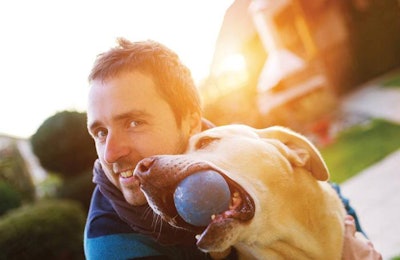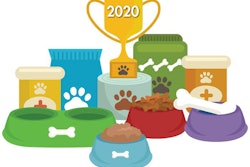
While baby boomers are still the largest group of pet-spending consumers and account for the most dollars spent on pet food and pet care in the U.S., their share and spending are dropping, according to new analysis of 2018 pet spending by John Gibbons of PetBusinessProfessor.com. Fortunately, Gen X and millennial pet owners are picking up the slack.
Based on data from the U.S. Bureau of Labor Services Consumer Expenditure Survey, Gibbons’ analysis showed that boomers – born in 1946 to 1964 – comprise 43.8 million consumer units (CUs, essentially the same as households), or 33% of the 131.4 million CUs in the U.S. However, that number has declined by 1.3 million since 2016. Similarly, boomers’ spending on overall pet care, at US$29.61 billion, accounts for the largest share of overall pet spending, at 37.7%; but that share is down from 46.8% in 2017, while their spending total decreased by 18%.
Meanwhile, Gen Xers (born 1965 to 1980) grew by 700,000 CUS, up to 35.5 million, and millennials (born 1981 to 1999) reached 34.8 million, up 2.2 million CUs. Their overall pet spending also rose: Gen X spending by 17.9% to US$25.15 billion and millennials’ by 25.4% to US$16.92 billion.
Pet food spending affected by market trends, issues
Baby boomers’ waning influence as big-spending pet owners is especially apparent with pet food, which, as Gibbons pointed out, is driven by trends. “For boomers and the younger groups, the up-and-down, trendy nature of pet food is readily apparent, but the swings in spending are more pronounced for boomers,” he wrote.
An example in 2018 he cited was the Food and Drug Administration’s warning about grain-free dog food and its possible link to canine dilated cardiomyopathy. “It created a turmoil,” Gibbons wrote. “Boomers dialed back to more regular food. However, it appears that the younger groups were unaffected or may have upgraded to even more expensive varieties.”
The spending numbers may prove this out. In 2018, boomers’ pet food spending dropped 25%, down US$3.93 billion from 2017, ending at US$11.78 billion. Average pet food spending per boomer CU decreased by US$84.19 to US$264.73.
The good news is that younger pet owners stepped up: the average Gen X CU spent US$234.05 on pet food, up slightly from 2017, with their total pet food spending for 2018 rising 7.9% to US$8.32 billion. Millennials especially offset some of the boomers’ decline, with their average CU pet food spending up US$20.36, to US$174.76, and their total pet food spending up 19.6%, ending at US$6.04 billion.
Thus, while millennial pet food spending currently reaches just slightly more than half that of boomers, the fact that it’s steadily rising is a positive sign. “They are the only group with increases in pet food spending in 2016, 2017 and 2018,” Gibbons said. “They are growing in number and in their commitment to their pets. Since 2014, they have been the pioneer in food upgrades.”
Where millennials turn for pet food advice
Another source of data provides some insight into where and from whom U.S. pet owners seek advice on feeding their pets, and again, generational differences are clear. According to a pet industry survey conducted recently by Bigeye, an advertising agency based in Orlando, Florida, USA, pet owners aged 25-34 turn to friends and family most often for pet food recommendations; 49% of respondents in that group chose that as one source. (The survey apparently asked them to choose all sources that apply.)
While 47% of pet owners in that younger age group said they seek feeding advice from veterinarians, 43% also look to pet food reviews. Meanwhile, the percentage of pet owners aged 45 to 54 seeking veterinary advice on feeding was at 53%, with only 29% of that group also considering friends and family as a source and only 23% reading pet food reviews.
Pet owners aged 35 to 44 responding to the survey fell in between the other two groups: 48% seek veterinary advice, 35% turn to friends and family and 34% read pet food reviews. The groups were all about the same in terms of doing pet food research on the internet (23 to 24%), and the share of pet owners looking to online influencers for pet food advice was surprisingly low, especially for those aged 25-34: only 13%. (The 35-44 group was at 7%, 45-54 only 3%).
Millennials’ growing clout and influence on the pet food market continues, a good thing for all.

















